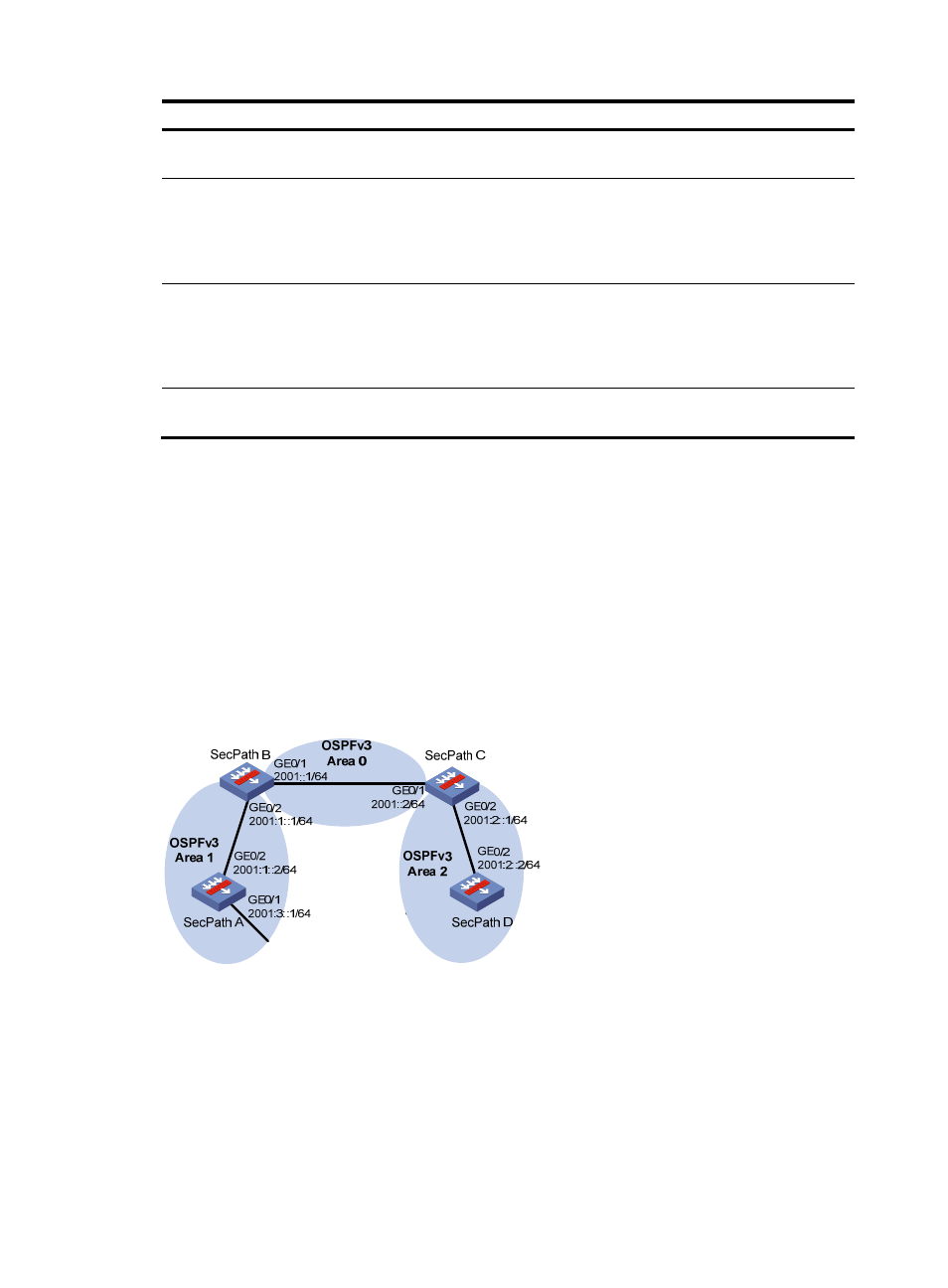Ospfv3 configuration examples, Configuring ospfv3 areas, Network requirements – H3C Technologies H3C SecPath F1000-E User Manual
Page 791: Configuration procedure

766
Task Command
Remarks
Display OSPFv3 next hop
information.
display ospfv3 [ process-id ] next-hop [ | { begin |
exclude | include } regular-expression ]
Available in
any view
Display OSPFv3 link state request
list information.
display ospfv3 [ process-id ] request-list [ { external |
inter-prefix | inter-router | intra-prefix | link | network
| router } [ link-state-id ] [ originate-router ip-address ] |
statistics ] [ | { begin | exclude | include }
regular-expression ]
Available in
any view
Display OSPFv3 link state
retransmission list information.
display ospfv3 [ process-id ] retrans-list [ { external |
inter-prefix | inter-router | intra-prefix | link | network
| router } [ link-state-id ] [ originate-router ip-address ] |
statistics ] [ | { begin | exclude | include }
regular-expression ]
Available in
any view
Display OSPFv3 statistics.
display ospfv3 statistic [ | { begin | exclude | include }
regular-expression ]
Available in
any view
OSPFv3 configuration examples
Configuring OSPFv3 areas
Network requirements
, all firewalls run OSPFv3. The AS is split into three areas, in which, SecPath B and SecPath
C act as ABRs to forward routing information between areas.
Configure Area 2 as a stub area in order to reduce LSAs in the area without affecting route reachability.
Figure 383 Network diagram
Configuration procedure
1.
Configure IPv6 addresses for interfaces. (Details not shown.)
2.
Configure OSPFv3 basic functions:
# Configure SecPath A.
<SecPathA> system-view
[SecPathA] ipv6
[SecPathA] ospfv3 1